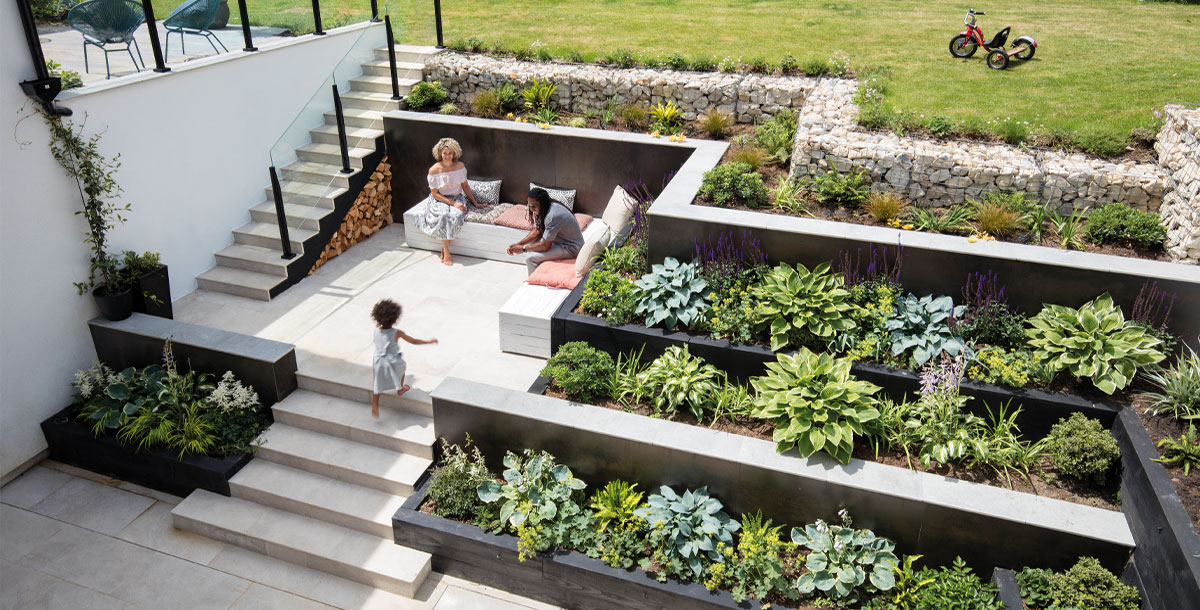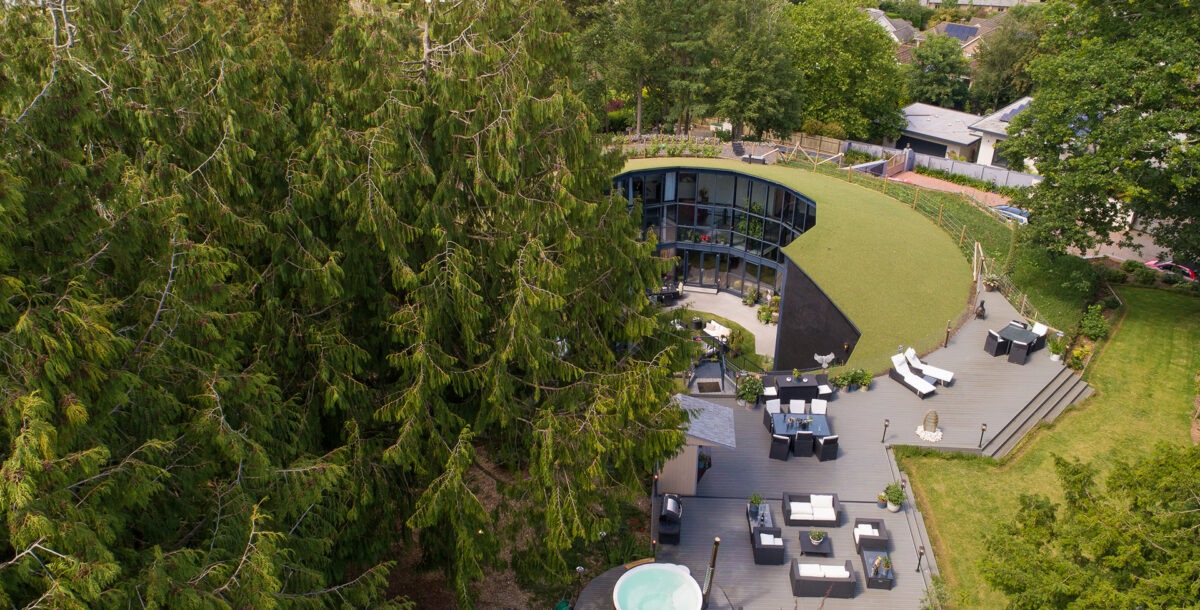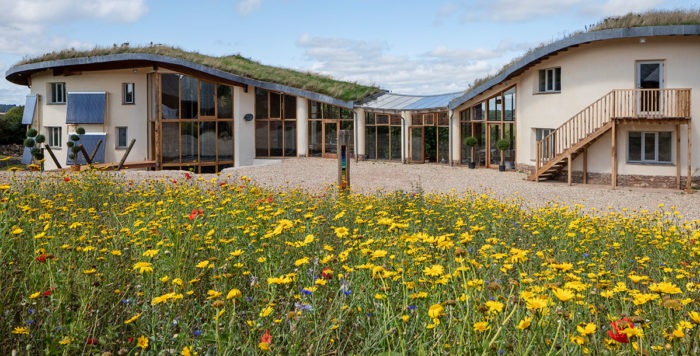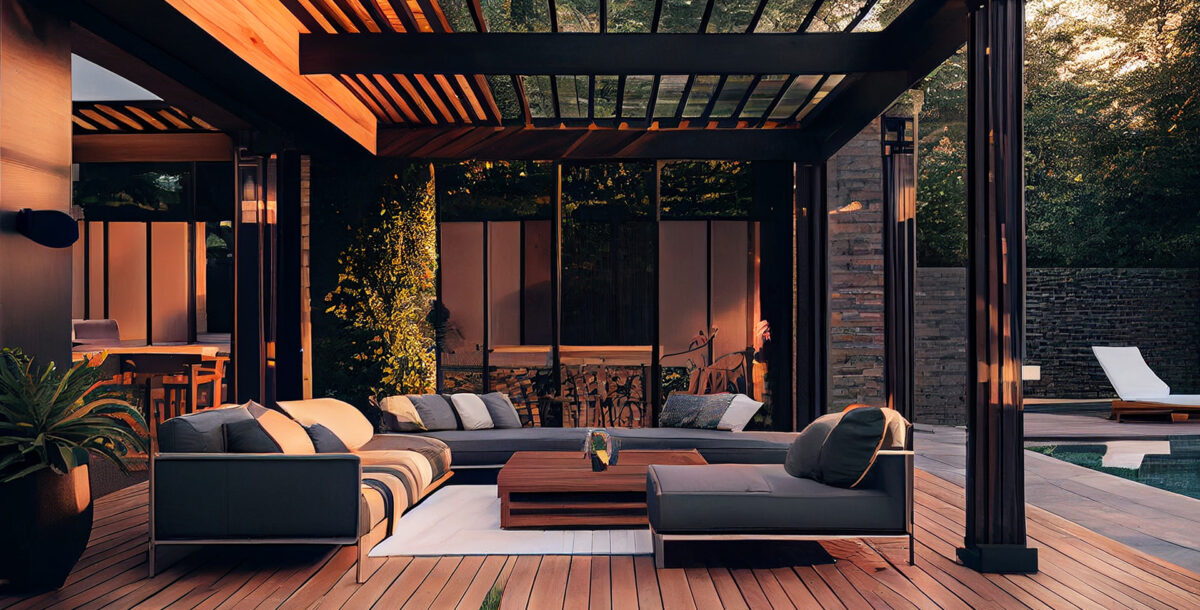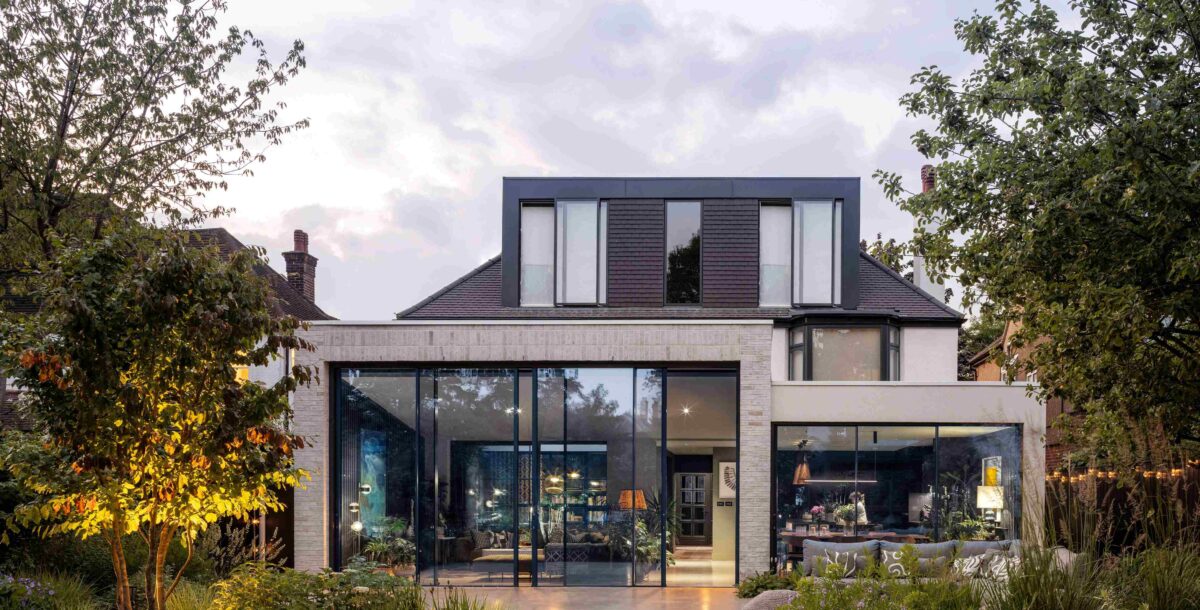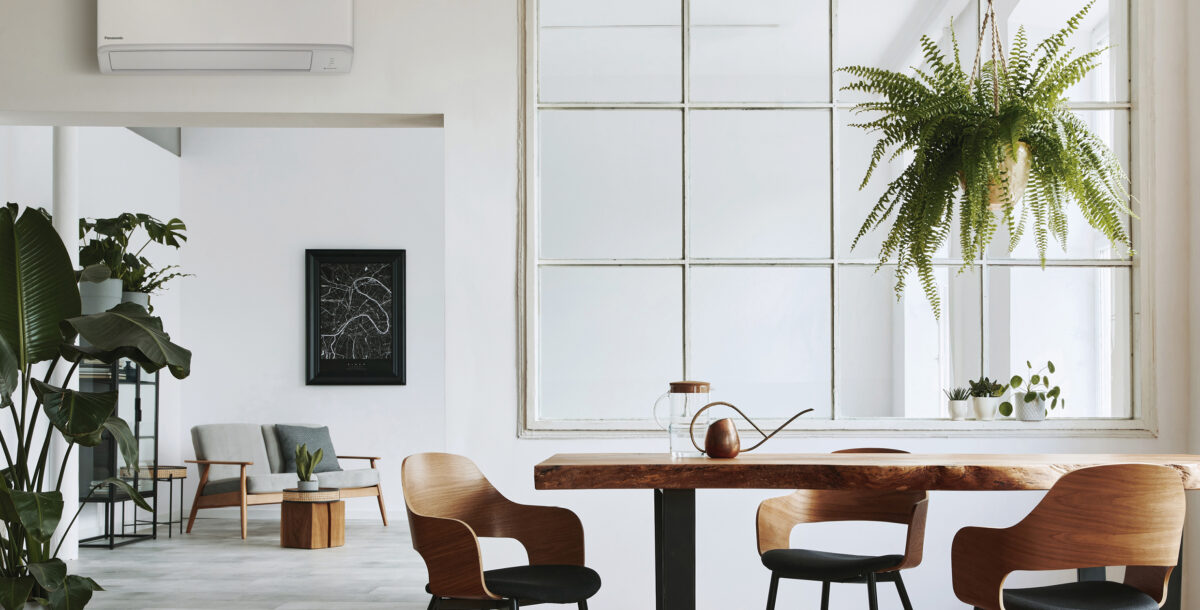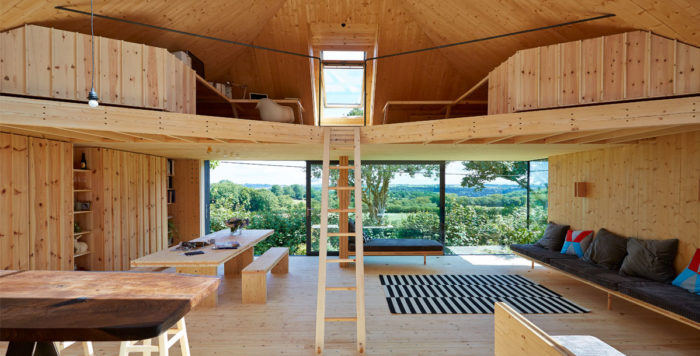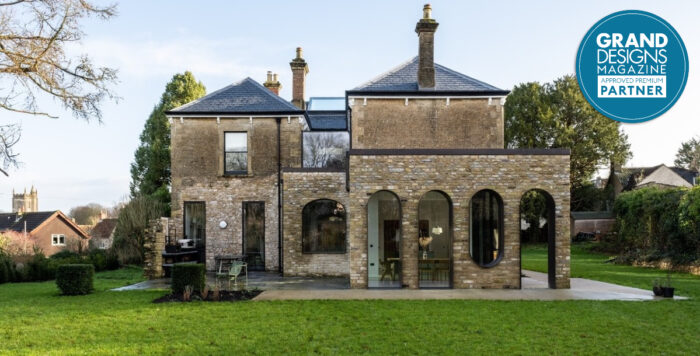A gradient may seem like a challenge to landscape, but these sloped garden ideas show how creative landscaping, structural work and planting can deliver an impactful outdoor space.
‘A slope can be an opportunity to create visual interest in the level changes,’ says James Scott, MD of The Garden Company. ‘A flight of steps can meander and lead to a feature on the upper level rather than just running straight up and down, while vertical spaces between the levels can be used for a water feature or a piece of art as well as planting.’
What can I do with a sloping garden?
Embrace your gardens natural gradient with these seven sloped garden ideas.
1. Biophilic stairs
The upper level of this garden in Primrose Hill, north London, already had a well established semi-exotic scheme. To complement a new basement extension by Ben Adams Architects, FFLO drew the qualities of this planting down the sloping garden and into view from the new floor below.
Plants weave through the slatted laser-cut Corten steel stairs. In front of the slope is a brushed-concrete terrace, and the retaining walls on either side consist of board-marked and bush-hammered concrete.
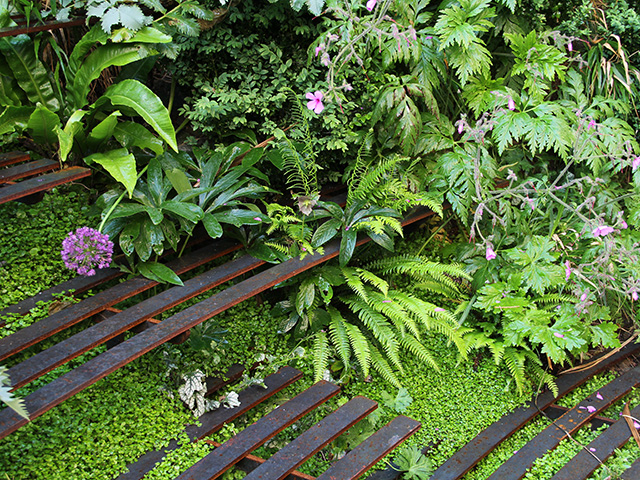
Plants weave through the Corten steel stairs. Photo: Joe Sanders
2. Textured tiers
This large self-build project in Richmond, south west London, which featured on Grand Designs in 2018, saw homeowners work with Landart UK on a sloped garden design with hypoallergenic qualities.
The family has an array of allergies, including asthma. The tiered planting scheme includes plants pollinated by insects rather than wind, such as hydrangea and lavender, to keep airborne pollen to a minimum. Interest is added with textures of stone, and logs for the Ecodesign woodburner.
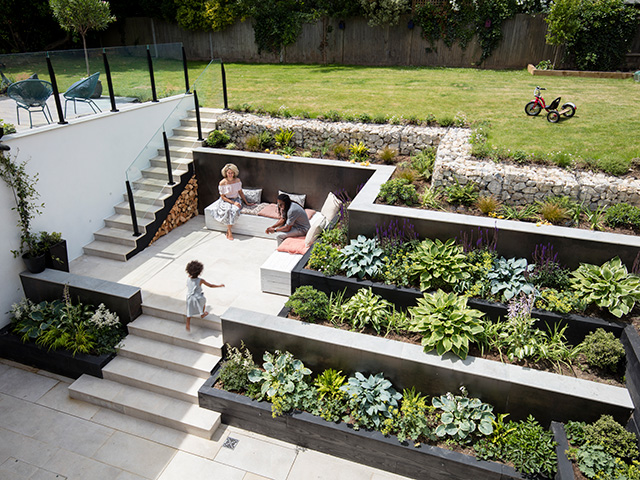
Plants pollinated by insects rather than wind keep airborne pollen to a minimum. Photo: David Giles
3. Meandering paths
This sloped garden design, pictured above and below, was developed as part of a home renovation near Oxford. Garden designer Sarah Naybour tackled the steep site using oak walls and a gabion wall – a wire container full of rocks – to retain the levels.
Paths cut through swathes of grasses and perennials as they wind up the slope. The general rule is to select hard landscaping materials that complement the style of your house. Use natural stone or gravel for meandering paths for a traditional look, or symmetrical block paving for a contemporary scheme.
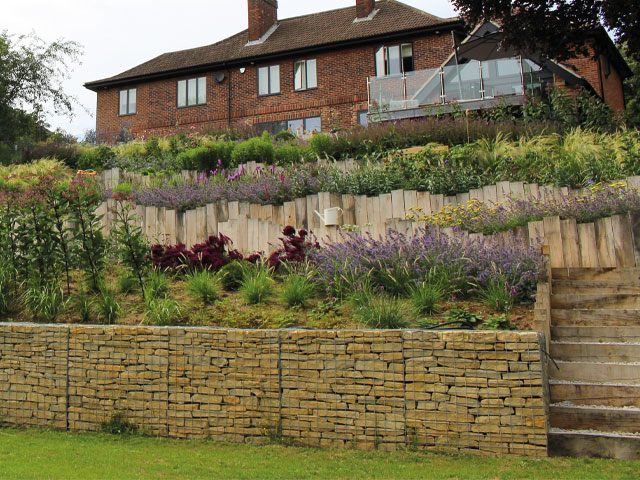
Paths cut through grasses and perennials as they wind up this sloping garden. Photo: Sarah Naybour
4. Modern terraces
In this steep garden, designer Georgia Lindsay replaced crumbling infrastructure with new concrete walkways, creating a series of terraces that could be designated for different functions.
Two bicycle storage areas form the first terrace, while the upper terraces are sunny enough to grow veg. Lighting ensures each area is useable day or night, and a raised planter at the edge of each storey curtails any fall hazards.
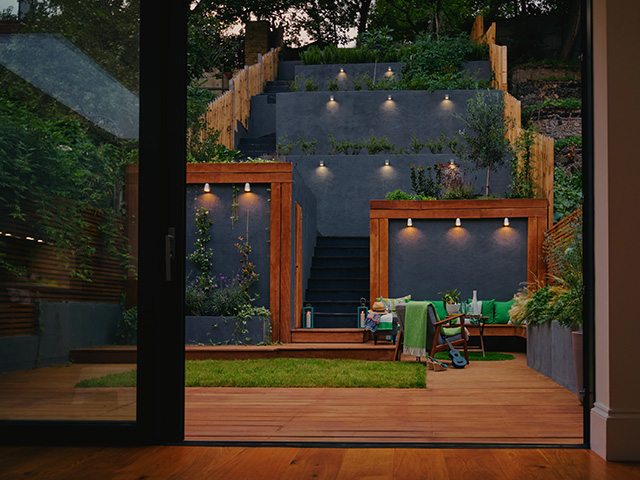
This series of terraces incorporates storage and planting. Photo: Nathalie Priem
5. Container garden
While the overall grounds have been landscaped in a contemporary style, it’s the access to the basement of this London new build by Square Feet Architects that provides an interesting site for additional gardening.
A series of containers runs alongside the steps, featuring planting as well as a water feature, helping to blur the boundaries between indoors and out, and retain the connection to nature for this subterranean space.
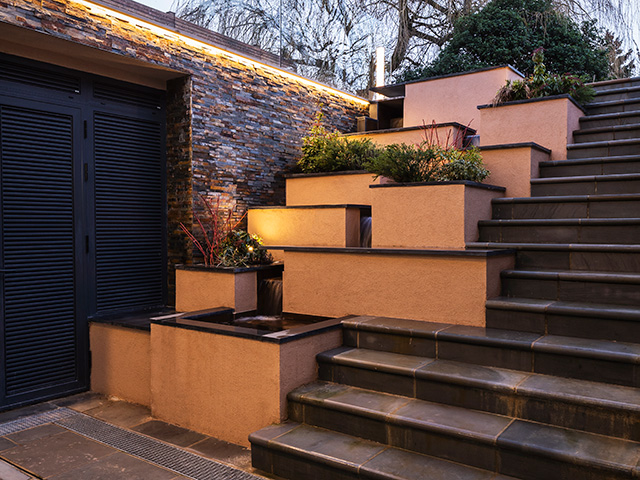
This series of containers connects the basement extension to nature. Photo: Rick McCullagh
6. Adding water in a sloped garden
Styling a water feature is a great sloped garden idea as it can be a beautiful way to showcase the unusual landscape.
There are plenty of options of how to do this, incorporating it into steps or having a purpose-built feature. From simple elegant rills with shorter waterfalls to a natural stream look, these can really transform your garden into a relaxing hub.
A sloped garden will ensure a speedy movement of water. This is amazing for those who might be living nearer a busy road than they wish, as it will help to create background noise and deaden other outside sounds.
Get embed code
7. Using screens tactically
A sloped garden can feel intrusive if it’s overlooked, as it can be easy for neighbours and passers by to see in. However, the tactical use of screens can mean a few touches will give you the privacy you seek.
The gradient of a sloped garden means you can use taller trees and shrubs on lower terraces to screen the upper areas. This can be a good place to have a seating or dining area, as you’ll get a great view of the lower end of the garden and can be hidden from view.
Opt for established trees and shrubs if you’re using your sloped garden straight away as these will immediately help to obscure the view into your garden.
Can you flatten a sloped garden?
Yes, it is possible to flatten a sloped garden. While it adds depth and visual interest to your outdoors space, it can also make gardening and landscaping a bit difficult so it’s understandable you might want to flatten it.
How do I flatten a sloped garden?
Firstly you need to measure the slope and work out how much levelling will be required. Measure the slope with a level and this will give you an idea of the high and low points of the garden, as well as how much soil will need to be moved to create a level surface.
Now it’s time to plan your approach to level the garden. You can do this by terracing, building retaining walls or filling with soil. To decide, it’s best to consider your garden’s size, how much levelling will be required and your budget to make the choice.
Terracing is one of the most popular ways to level a sloped garden. To terrace a sloped garden you will need to build a series of retaining walls or raised beds. This will then create multiple flat areas where you can plant, arrange seating or other outdoor activities. However, terracing can be time consuming and expensive, but the end result is worth it.
If terracing isn’t an option for you, consider building retaining walls to level your space. These are structures which hold back soil and create flat areas on a slope. They can be made from wood, concrete or stone, and can be built at different heights to create multiple levels which support plants and landscaping features.
Finally, the third way you could level your garden is by filling the lower areas in with soil. This is the cheapest and easiest option, especially if you have smaller slopes. Begin by adding soil to the low areas and compacting it until it’s level. However, make sure you’re using a good quality topsoil to improve fertility and drainage.
Do I need permission to flatten my garden?
Usually you won’t need permission to flatten your sloped garden. However, there are instances in which you might need to seek permission, for example if your home is a listed building.
If you are unsure whether you need permission, it’s best to check with the local council before beginning the process of levelling your garden.
How do you drain a sloped garden?
Sloped gardens have natural advantages for landscape drainage, but the can be prone to lingering water and other issues. It’s crucial you get the drainage right.
Channel drains
One option for draining your sloped garden is channel drains. These are also known as a trench drain system, and are best placed at the bottom of hills, where most rainwater will collect. They are narrow and easy to disguise with plants so you don’t need to worry about the aesthetics of your outdoor space being affected. They are easy to install and can reroute any collecting water to a proper draining area. Make sure to make the channel drain big enough to handle significant amounts of overflow.
French drains
French drains are a great alternative to channel drains as these have a drainage pipe set in a gravel box which is covered with a unique fabric to prevent dirt and silt from washing into the drain. As the water level rises when it rains, the water flows into the pipe to the exit.
Like channel drains these work best when placed where the water is most likely to collect, usually at the bottom of the slope. Mixing French drains with vertical drains when you have several levels to the slope can be beneficial, this makes it easier to keep the entire slope dry.
Retaining walls
Retaining walls is another alternative. They’re not just useful for flattening your sloped garden, but can also help to drain it. Rather than holding water back, these encourage drainage by creating large gaps that water can flow through, as natural vertical drains. They only need a few inches of gravel to let water drop down into a pipe. These are often used alongside channel or French drains to keep water moving.
READ MORE
- Garden landscaping for new builds: 10 ways to establish an empty plot
- Garden shed buying guide
- Water feature ideas for any size garden

